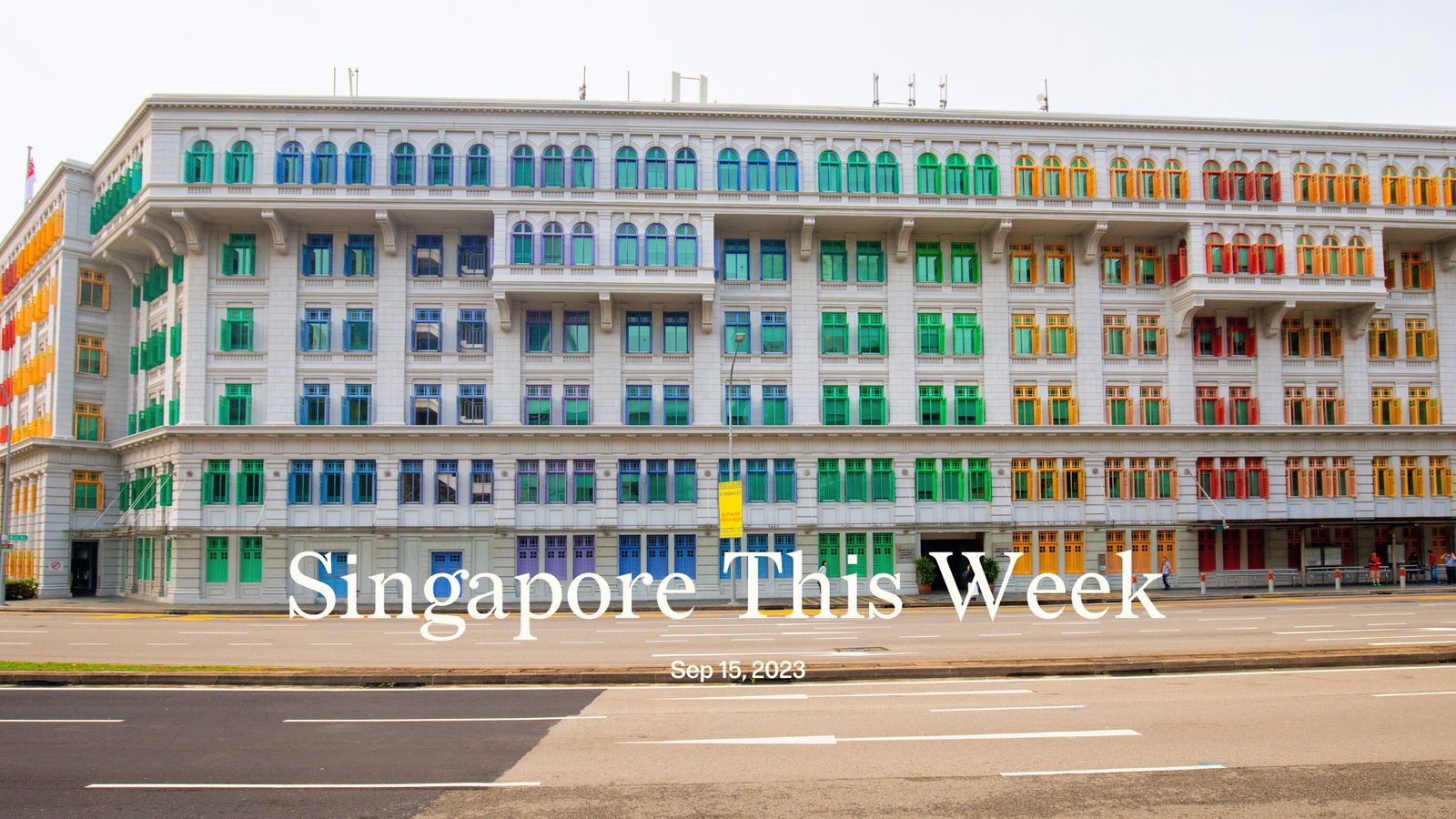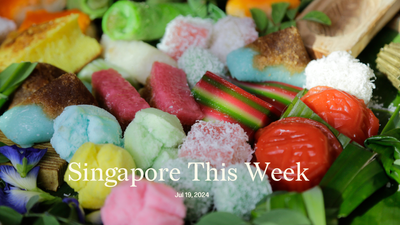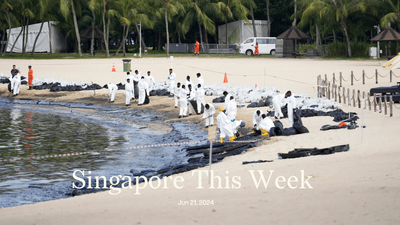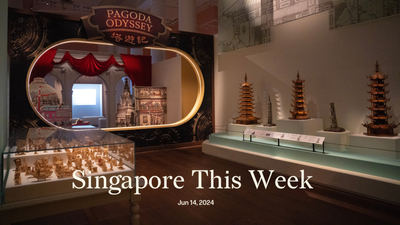Politics: ‘Foreign interference in our domestic politics’
Last Friday, the Ministry of Communications and Information (MCI) issued a warning to Dominic Ziegler, Banyan columnist and Singapore bureau chief for The Economist, for his endorsement of Jom, which we published in our weekly newsletter on August 25th. (Copy here.) MCI said that Ziegler had “compared Singapore to an illiberal state, and encouraged Singaporeans to embrace an alternative vision, instead of what was being offered by the state and an allegedly captive media.” Ziegler did indeed imply that Singapore is among “illiberal states”, but “illiberal” is a term used by many academics, including Hussin Mutalib at the National University of Singapore (NUS) in a journal article in 2000. (Does the government instead envision Singapore as a liberal state?) But nowhere, in our view, does Ziegler encourage Singaporeans to “embrace an alternative vision”. What he said was that Jom is “offering visions of alternative Singapores”. Indeed we have, and will continue to do so. The Straits Times, unfortunately, simply regurgitated MCI’s allegations without telling their readers what he actually said. Ziegler is a fan of Singapore, as is evident from all his journalism, not just the column he wrote after he moved here, about choosing Singapore over Hong Kong. Many foreign journalists have left Hong Kong over the past few years. Quite a few decamped to Seoul, where The New York Times and The Washington Post, among others, have important offices. Several journalists from The Economist, who could have been sent to any major city in Asia, are now here. It’s an important vote of confidence in “the great city-state of Singapore,” as Ziegler described our country in his endorsement. He is one of four people, alongside Preeti Nair (“Preetipls”), Teo You Yenn, and Walid Abdullah, in Jom’s first-ever advertising campaign. We’re grateful for their support, and are hopeful that their endorsements will increase awareness of Jom around the region.
Politics: POFMAs for an article by assistant professor at NUS, as well as a podcast
East Asia Forum (EAF), a platform based at the Australian National University that publishes work on the region, was issued a correction direction by Singapore’s Protection from Online Falsehoods and Manipulation Act (POFMA) Office. The government alleges that there are falsehoods in “A spate of scandals strikes Singapore”, an article by Ying-Kit Chan, an assistant professor at NUS’s department of Chinese studies. This appears to be the first time an academic at a local institution has fallen foul of this law. Curiously, the order was issued for an article almost one month old, and may be self-defeating for the government because of the Streisand effect: offering EAF and Chan more prominence. At the time of writing, EAF had yet to put up the usual POFMA correction notices on its homepage and above the article itself. (It has a link right at the bottom.) Perhaps it feels insulated because it’s based overseas. If it refuses to comply, there is a risk that the Infocomm Media Development Authority will get internet service providers here to block its website, as it’s done before with Lawyers for Liberty, a Malaysian NGO, and Asia Sentinel, a news and commentary site originally based in Hong Kong but now in California. Whatever happens, we hope that the POFMA chilling effect doesn’t further frighten off Singaporean academics from writing about politics here. Separately, the government issued a correction direction to Plan B, the first time a podcast has received one. This relates to alleged false statements made by James Raj Arokiasamy, a recent guest on the show, who uses the pseudonym “The Messiah”, and claims to be part of hacktivist group Anonymous. Plan B has put up the notices on its Instagram and Spotify shows, though the use of the law to address alleged falsehoods in an audio format raises numerous questions about speech, truth and information, not least how a text-based correction is supposed to work in conjunction with an audio track.
Society: Milo-peng-san
It’s late on a Sunday morning. You’ve decided to treat yourself to a Macs breakfast–deluxe, milo peng, extra hash brown (none of that sausage wrap nonsense). Your order is in the kitchen. Grab has found you a rider. Your order is on the way. Your order is arriving. The intercom rings and you see the rider in the lift lobby. You’re about to let him in but wait, did he just…he just took a swig right out of your milo peng. Hazique Hibri found himself in a similar predicament last week and made a TikTok that’s since been viewed almost 630,000 times. “The mouthpiece was so wet…I don’t know if it was saliva or sweat or a combination of that and spilled milo, but that shit was nasty,” he said. Netizens have expressed their disgust, with some urging others to always check their delivered food for foul play or tampering. Acknowledging the strenuous nature of food delivery and how riders might get thirsty on the job, Hazique refrained from naming that particular rider. But he contacted Grab, who has since banned the rider from its platform and given Hazique a full refund. This might be a one-off case involving a rogue rider, but it’s worthwhile to ask how the job conditions for delivery riders might (inadvertently) contribute to such behaviour. On some platforms, including Grab, riders are categorised based on the number of trips they complete every quarter; the higher the tier, the more benefits, such as insurance coverage, they receive. This incentive-based system exerts pressure on riders, dissuading them from rejecting orders so they can meet “acceptance rate[s]”, even if they are physically exhausted and need a drink. Currently, riders are not considered formal employees—they do not receive Central Provident Fund (CPF) contributions and are legally unable to form unions under the Trade Unions Act. Starting next year, platform workers (including delivery riders and drivers) will be represented by a “union-like body”, which will be able to negotiate with platform operators and sign legally binding collective agreements. Riders will also start receiving CPF contributions and standardised insurance protection that covers medical expenses, income loss and lump sum compensation for permanent disability or death. Hopefully that means better working conditions for all, and fewer stolen sips of milo-peng.
Society: Improving suicide prevention with a national strategy
Last year, 476 people took their own lives in Singapore, a 25.9 percent increase from 2021, and the Republic’s highest figure since 2000. Those 60 years and above saw some of the highest increases in suicide deaths compared to 2021; with septuagenarians registering the biggest rise at 60 percent. While, for the fourth consecutive year, suicide was the leading cause of death for youths aged 10 to 29. To address this, a new, ground-up working group aims to develop a white paper by next September that sets out a blueprint for the country’s first suicide prevention strategy—one that will hopefully reduce suicide rates and offer “compassionate support to those affected.” Initiated by advocacy group SG Mental Health Matters and co-chaired by Anthea Ong, a former nominated member of Parliament, and Dr Jared Ng, a psychiatrist and former chief of emergency and crisis care at the Institute of Mental Health, it brings together expertise from the private, public and community sectors. This includes suicide survivors, people who have attempted or contemplated suicide, NGOs, social service agencies, government representatives, medical and academic professionals, religious leaders and the media. The World Health Organization (WHO) advocates for countries to prevent suicide through a comprehensive national suicide prevention strategy—as is the case, say, in Malaysia and Thailand. Singapore has an inter-agency task force on mental health and well-being, but nothing suicide-specific. Dr Ng told The Straits Times that Singapore needs a strategy that “covers education, prevention, crisis intervention and support for families and people who have survived suicide attempts.” The group plans to collect more data, currently sorely lacking, to better tailor future initiatives to suit the country’s cultural, social and economic contexts. It will also study existing strategies around the world, like in Indonesia and the UK. Ong has also reassured that the elderly—some of the country’s most vulnerable—won’t be neglected. As a key stakeholder, she told Jom, the initiative will work closely with community groups to include seniors’ needs in developing the white paper. Aside from destigmatising suicide by talking about it, Ong added that her other wish would be to “nuance and maybe delink suicide” from mental health as a “national narrative”. This enables the devising of more targeted measures, she explained: “Not all who have mental health conditions live with suicidality. Not all who live with suicidality are mentally ill.”
History weekly by Faris Joraimi
What is true, and what is false? Twentieth-century thinkers have argued that “truth” itself is a socially-produced category. Modern science also has its own assumptions about what makes a sound procedure for establishing facts. (Which flat-earthers and anti-vaxxers often misuse.) Historians, supposedly vanguards of objectivity, are now mostly wise enough to have realised that no one is ever really neutral. As someone training to join that profession one day, I frequently encounter anecdotes and reports of dubious origin as tools of my trade. Good historians see the value in them, as reflections of underlying “social facts”. One of my favourites involves the famed Italian astronomer, Galileo Galilei (1564-1642). In 1616, the Catholic Church investigated Galilei for arguing that the Earth was not at the centre of the universe, as the Bible said, but instead revolved around the Sun. They let him off with a warning, but prosecuted him in 1632 after he published a book comparing both astronomical models. In those days the Church in Rome, with its armies and territories, wasn’t just a religious authority; it was a kind of government, which meant that its rulings had legal implications. In a plea bargain, Galileo agreed to confess that he argued more strongly in favour of the “heliocentric” model, even though he denied believing in it himself. The Roman Inquisition found him “suspect of heresy” and sentenced him to lifetime house arrest. A tragic, but also quite bureaucratic, affair. Later writers embellished what happened. In response to his punishment, Galileo was said to have uttered, “E pur si muove” (and yet it moves), heroically defying the Church’s insistence that the Earth was stationary. But the quote first appeared only in a 1757 English account of Galileo’s life, reproduced later in a 1761 French volume. It reappeared in a painting initially thought to be from 1643, proven to be no older than the 1800s. Despite being “false”, the quote circulated widely, probably because it contained a universal “fact” about the limits of legislating truth. After 200 years, in 1835, the Church removed Galileo’s astronomy text from their Index of Prohibited Books. A parable for Singapore, perhaps: change may be slow, and yet, it moves.
Arts: LKY100
It is comforting, perhaps, that even the wishes of Lee Kuan Yew, our founding prime minister, can be interpreted with a pinch of salt if they stand in the way of nation building. Observers of Singapore’s political history are well-aware of Lee’s aversion to cults of personality. Since his death in 2015, many—including his son Lee Hsien Yang, daughter Lee Wei Ling, nephew Li Shengwu but also cabinet member Ng Eng Hen—have referenced the anecdote of Lee responding with “Remember Ozymandias” to the suggestion of a monument being built in his image. (The Percy Bysshe Shelley poem famously described a “colossal Wreck” of a statue as being all that remains of a once-great ruler.) It’s true that we still have no Lee Kuan Yew statue at the mouth of the Singapore River to gaze upon. The government’s decision not to erect one has, however, not stopped the late Lee’s birth centenary from being commemorated in other ways. Here is a non-exhaustive list of efforts for LKY100: “Now Is Not The Time”, an immersive exhibition that features readings of artificial intelligence (AI)-generated monologues inspired by the statesman’s speeches, a short film based on his speech “Chasing The Rainbow” (also AI-generated), and an intact full body sculpture; “LKY 100 光宗耀祖 Tribute Exhibition”, a “phygital” show that combines physical artworks and their digital counterparts in the Metaverse, including a “set of hieroglyphs created to honour his ideology”; “LKY 100”, an exhibition in Lee’s former ward Tanjong Pagar Community Club, “LKY100 - The Boy Who Became Prime Minister”, an exhibition at The Children’s Museum, versions of which will also travel to five public libraries in residential neighbourhoods; “LKY 100: Life and Legacy of Lee Kuan Yew (1923-2015)”, a digital trail and short film by Royston Tan commissioned by the National Museum of Singapore; a commemorative S$10 coin with Lee’s face on it; and a limited edition chrysanthemum tea packet with Lee’s face on it. All the aforementioned exhibitions are open to the public.
Arts: Few Last Words
Dance company Chowk Productions premieres their latest original production “Limbo: Few Last Words” at the end of this month. True to Chowk’s multicultural approach, what the company calls a “Singapore-made idiom of Asian contemporary dance”, the performance lists a range of influences that draw from both Western and Asian art histories. Partially based on Henry Miller’s novel Tropic of Capricorn and TS Eliot’s poem “The Hollow Men”, Chowk’s interpretation uses a choreographic vocabulary that includes Odissi, a centuries-old form of classical Indian dance and Gotipua, a folk dance that is widely regarded to be Odissi’s precursor. It is choreographed by Raka Maitra, Chowk’s founder and artistic director, and directed by Guillermo Angelelli, an Argentinian theatre-maker who has been a faculty member at Singapore’s prestigious Intercultural Theatre Institute (ITI), since 2012. ITI alums Caroline Chin, Rhian Hiew, Uma Katju, Liz Tan and Tan Weiying make up a majority of the cast (Anushka Ghosh is the only listed cast member to not have graduated from ITI). The production runs from September 28th-30th at the Drama Centre Black Box. Tickets, including premium tickets that come with a post-show meet-and-greet with the artists, are available from Peatix.
Tech: Growing the university entrepreneurship ecosystem
E-commerce firm Carousell, “SuperApp” Grab, and data-analytics outfit Patsnap operate in diverse sectors, but have one thing in common—these tech unicorns were born on a university campus. Likewise, other rising start-ups, such as recruitment platform Glints and deliver-service Ninjavan. It’s thus unsurprising to see Protege Ventures, South-east Asia’s first and sole student-run VC, launching a second fund investing in start-ups founded by students—with capital of S$500,000, contributed by David Su, the founding managing partner of Beijing-based VC Matrix Partners China. Established in 2017, Protege Ventures has invested roughly S$264,170 in 10 student-founded companies through its first fund. These companies, which each received between S$25,000 and S$50,000, procured an aggregate of S$35.4m in subsequent funding. Notable portfolio companies include mental health start-up Intellect and AI writing tool Hyptoneus AI. Operating like a conventional VC firm, Protege trains students from universities and polytechnics across Singapore. They begin as analysts and can rise to become partners of the fund. Protege also supports student entrepreneurs in its portfolio through masterclasses, and mentorship. While student-run VC funds are no longer a novelty in South-east Asia, they’re much smaller than peers in the US, such as the Dorm Room Fund, with US$10.4m (S$14.1m) of assets under management in 2022. Beyond supporting students, there is also greater support for researchers at NUS and the Nanyang Technological University (NTU). Along with Temasek, they have initiated a S$75m pilot programme to bolster deeptech start-ups with roots in their research endeavours. Areas of focus include energy transition, biotechnology, and future computing, in keeping with current global trends and expected demand. Temasek will inject S$64.95m primarily via Xora Innovation, an entity that focuses on early-stage deeptech enterprises, while NTU and NUS will contribute approximately S$4.9m each. The combination of support for student entrepreneurs as well as researchers in the universities are positive signals for a more robust university entrepreneurship ecosystem in the years to come.
Tech: The race for semiconductors
Two current global “megatrends” are the geopolitical rivalry between the US and China, and the acceleration in AI adoption. At their intersection is the embattled semiconductor industry, which has faced raw material export restrictions in China as well as prohibitions from working with Chinese companies in the US. Understandably, semiconductor companies are rushing to diversify their supply chains. One such company is US-based semiconductor manufacturer GlobalFoundries (GF), which inaugurated its US$4bn (S$5.45bn) expansion fabrication plant in Singapore. The new facility increases GF’s annual local production of semiconductor wafers by 450,000 to nearly 1.5m. The 23,000 sqm plant is projected to create 1,000 jobs primarily for engineers, equipment technicians and process technicians. Singapore, accounting for 11 percent of the global semiconductor market, is increasingly focused on becoming a global hotbed for high-tech manufacturing under the Manufacturing 2030 vision. GF, the third-largest foundry by revenue globally, manufactures semiconductors for several design companies, including Qualcomm, MediaTek, and NXP Semiconductors. Its chips feature in various devices, such as smartphones, laptops, cars, game consoles, and smart speakers. The launch of this additional plant will support the heightened demand for crucial semiconductor chips while circumventing the ongoing technological face-off between China and the US. Although Singapore currently benefits economically from the ongoing tech rivalry, a persistent worry is that it may one day be forced to take sides in any dispute between Chinese and US companies.
If you enjoy Jom’s work, do get a paid subscription today to support independent journalism in Singapore.
Correction: an earlier version said that Asia Sentinel is based in the Philippines, when in reality that's only where one of its co-founders lives. Sorry.







